#i’ve been using javascript it is difficult
Explore tagged Tumblr posts
Text


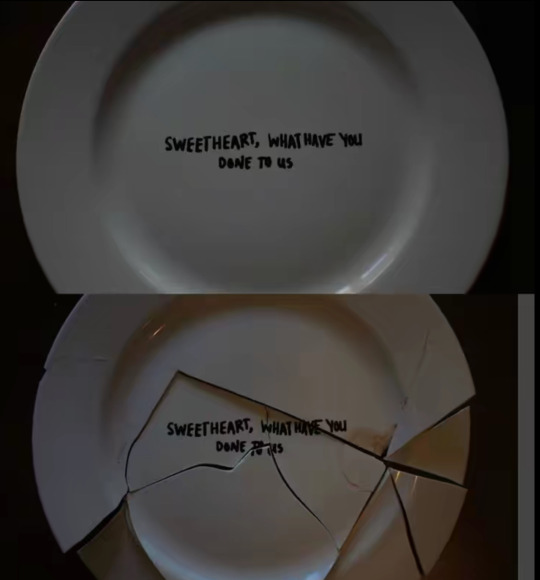

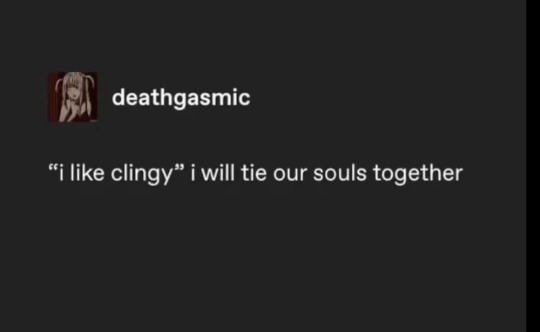
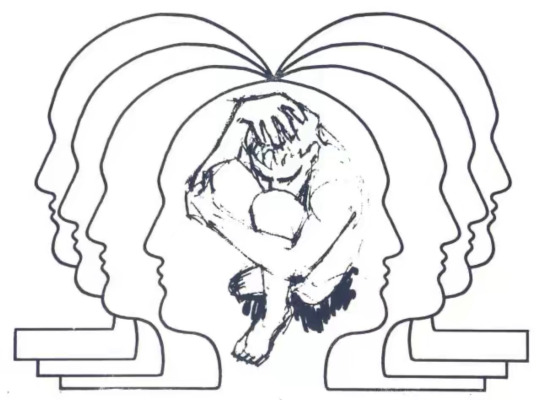
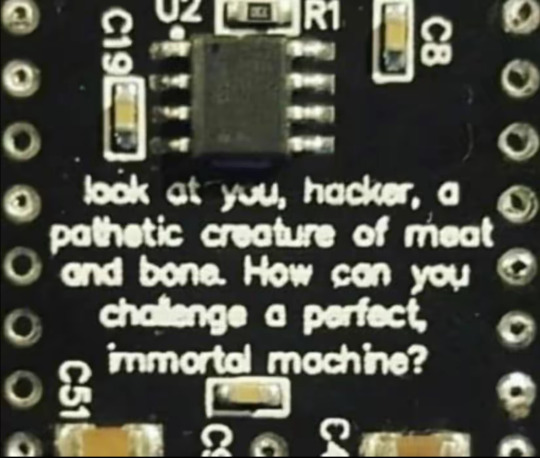
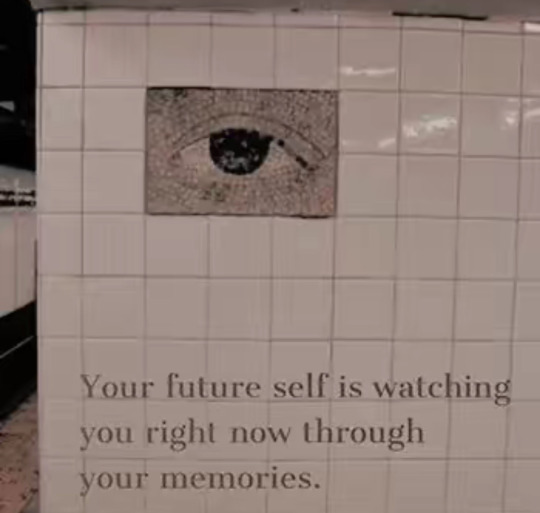

Helllooooo everyone. Dirk strider Moodboard part ???? Because I found more fuel. I’ve been super into coding lately and after understanding how code works, dirk’s mannerisms and tendencies are a lot easier to empathize with. Not the whole “controlling my friend’s lives so they live the most ideally to my standards” but in the sense of constant micromanagement. I understand that living and growing up almost completely alone will cause hyper independency, but being so involved with code and programming tends to invoke perfectionism within somebody. If the most minute details result in a complete project failure, then extreme attention to detail is a needed feature. Rambles and words, this guy is so neat.
#machines cannot feel empathy but they can be given the receptors to feel the illusion of emotion#alpha bro#bro strider#ult dirk#strider bros#i love characters that control the narrative#dirk strider#programming nerd#code#dirk#homestuck#i’ve been using javascript it is difficult#hal#robots#machines#trans#transgender
30 notes
·
View notes
Text
Revisiting CSS Multi-Column Layout
New Post has been published on https://thedigitalinsider.com/revisiting-css-multi-column-layout/
Revisiting CSS Multi-Column Layout
Honestly, it’s difficult for me to come to terms with, but almost 20 years have passed since I wrote my first book, Transcending CSS. In it, I explained how and why to use what was the then-emerging Multi-Column Layout module.
Hint: I published an updated version, Transcending CSS Revisited, which is free to read online.
Perhaps because, before the web, I’d worked in print, I was over-excited at the prospect of dividing content into columns without needing extra markup purely there for presentation. I’ve used Multi-Column Layout regularly ever since. Yet, CSS Columns remains one of the most underused CSS layout tools. I wonder why that is?
Holes in the specification
For a long time, there were, and still are, plenty of holes in Multi-Column Layout. As Rachel Andrew — now a specification editor — noted in her article five years ago:
“The column boxes created when you use one of the column properties can’t be targeted. You can’t address them with JavaScript, nor can you style an individual box to give it a background colour or adjust the padding and margins. All of the column boxes will be the same size. The only thing you can do is add a rule between columns.”
She’s right. And that’s still true. You can’t style columns, for example, by alternating background colours using some sort of :nth-column() pseudo-class selector. You can add a column-rule between columns using border-style values like dashed, dotted, and solid, and who can forget those evergreen groove and ridge styles? But you can’t apply border-image values to a column-rule, which seems odd as they were introduced at roughly the same time. The Multi-Column Layout is imperfect, and there’s plenty I wish it could do in the future, but that doesn’t explain why most people ignore what it can do today.
Patchy browser implementation for a long time
Legacy browsers simply ignored the column properties they couldn’t process. But, when Multi-Column Layout was first launched, most designers and developers had yet to accept that websites needn’t look the same in every browser.
Early on, support for Multi-Column Layout was patchy. However, browsers caught up over time, and although there are still discrepancies — especially in controlling content breaks — Multi-Column Layout has now been implemented widely. Yet, for some reason, many designers and developers I speak to feel that CSS Columns remain broken. Yes, there’s plenty that browser makers should do to improve their implementations, but that shouldn’t prevent people from using the solid parts today.
Readability and usability with scrolling
Maybe the main reason designers and developers haven’t embraced Multi-Column Layout as they have CSS Grid and Flexbox isn’t in the specification or its implementation but in its usability. Rachel pointed this out in her article:
“One reason we don’t see multicol used much on the web is that it would be very easy to end up with a reading experience which made the reader scroll in the block dimension. That would mean scrolling up and down vertically for those of us using English or another vertical writing mode. This is not a good reading experience!”
That’s true. No one would enjoy repeatedly scrolling up and down to read a long passage of content set in columns. She went on:
“Neither of these things is ideal, and using multicol on the web is something we need to think about very carefully in terms of the amount of content we might be aiming to flow into our columns.”
But, let’s face it, thinking very carefully is what designers and developers should always be doing.
Sure, if you’re dumb enough to dump a large amount of content into columns without thinking about its design, you’ll end up serving readers a poor experience. But why would you do that when headlines, images, and quotes can span columns and reset the column flow, instantly improving readability? Add to that container queries and newer unit values for text sizing, and there really isn’t a reason to avoid using Multi-Column Layout any longer.
A brief refresher on properties and values
Let’s run through a refresher. There are two ways to flow content into multiple columns; first, by defining the number of columns you need using the column-count property:
Second, and often best, is specifying the column width, leaving a browser to decide how many columns will fit along the inline axis. For example, I’m using column-width to specify that my columns are over 18rem. A browser creates as many 18rem columns as possible to fit and then shares any remaining space between them.
Then, there is the gutter (or column-gap) between columns, which you can specify using any length unit. I prefer using rem units to maintain the gutters’ relationship to the text size, but if your gutters need to be 1em, you can leave this out, as that’s a browser’s default gap.
The final column property is that divider (or column-rule) to the gutters, which adds visual separation between columns. Again, you can set a thickness and use border-style values like dashed, dotted, and solid.
These examples will be seen whenever you encounter a Multi-Column Layout tutorial, including CSS-Tricks’ own Almanac. The Multi-Column Layout syntax is one of the simplest in the suite of CSS layout tools, which is another reason why there are few reasons not to use it.
Multi-Column Layout is even more relevant today
When I wrote Transcending CSS and first explained the emerging Multi-Column Layout, there were no rem or viewport units, no :has() or other advanced selectors, no container queries, and no routine use of media queries because responsive design hadn’t been invented.
We didn’t have calc() or clamp() for adjusting text sizes, and there was no CSS Grid or Flexible Box Layout for precise control over a layout. Now we do, and all these properties help to make Multi-Column Layout even more relevant today.
Now, you can use rem or viewport units combined with calc() and clamp() to adapt the text size inside CSS Columns. You can use :has() to specify when columns are created, depending on the type of content they contain. Or you might use container queries to implement several columns only when a container is large enough to display them. Of course, you can also combine a Multi-Column Layout with CSS Grid or Flexible Box Layout for even more imaginative layout designs.
Using Multi-Column Layout today
Patty Meltt is an up-and-coming country music sensation. She’s not real, but the challenges of designing and developing websites like hers are.
My challenge was to implement a flexible article layout without media queries which adapts not only to screen size but also whether or not a <figure> is present. To improve the readability of running text in what would potentially be too-long lines, it should be set in columns to narrow the measure. And, as a final touch, the text size should adapt to the width of the container, not the viewport.
Article with no <figure> element. What would potentially be too-long lines of text are set in columns to improve readability by narrowing the measure.
Article containing a <figure> element. No column text is needed for this narrower measure.
The HTML for this layout is rudimentary. One <section>, one <main>, and one <figure> (or not:)
<section> <main> <h1>About Patty</h1> <p>…</p> </main> <figure> <img> </figure> </section>
I started by adding Multi-Column Layout styles to the <main> element using the column-width property to set the width of each column to 40ch (characters). The max-width and automatic inline margins reduce the content width and center it in the viewport:
main margin-inline: auto; max-width: 100ch; column-width: 40ch; column-gap: 3rem; column-rule: .5px solid #98838F;
Next, I applied a flexible box layout to the <section> only if it :has() a direct descendant which is a <figure>:
section:has(> figure) display: flex; flex-wrap: wrap; gap: 0 3rem;
This next min-width: min(100%, 30rem) — applied to both the <main> and <figure> — is a combination of the min-width property and the min() CSS function. The min() function allows you to specify two or more values, and a browser will choose the smallest value from them. This is incredibly useful for responsive layouts where you want to control the size of an element based on different conditions:
section:has(> figure) main flex: 1; margin-inline: 0; min-width: min(100%, 30rem); section:has(> figure) figure flex: 4; min-width: min(100%, 30rem);
What’s efficient about this implementation is that Multi-Column Layout styles are applied throughout, with no need for media queries to switch them on or off.
Adjusting text size in relation to column width helps improve readability. This has only recently become easy to implement with the introduction of container queries, their associated values including cqi, cqw, cqmin, and cqmax. And the clamp() function. Fortunately, you don’t have to work out these text sizes manually as ClearLeft’s Utopia will do the job for you.
My headlines and paragraph sizes are clamped to their minimum and maximum rem sizes and between them text is fluid depending on their container’s inline size:
h1 font-size: clamp(5.6526rem, 5.4068rem + 1.2288cqi, 6.3592rem); h2 font-size: clamp(1.9994rem, 1.9125rem + 0.4347cqi, 2.2493rem); p font-size: clamp(1rem, 0.9565rem + 0.2174cqi, 1.125rem);
So, to specify the <main> as the container on which those text sizes are based, I applied a container query for its inline size:
main container-type: inline-size;
Open the final result in a desktop browser, when you’re in front of one. It’s a flexible article layout without media queries which adapts to screen size and the presence of a <figure>. Multi-Column Layout sets text in columns to narrow the measure and the text size adapts to the width of its container, not the viewport.
Modern CSS is solving many prior problems
Structure content with spanning elements which will restart the flow of columns and prevent people from scrolling long distances.
Prevent figures from dividing their images and captions between columns.
Almost every article I’ve ever read about Multi-Column Layout focuses on its flaws, especially usability. CSS-Tricks’ own Geoff Graham even mentioned the scrolling up and down issue when he asked, “When Do You Use CSS Columns?”
“But an entire long-form article split into columns? I love it in newspapers but am hesitant to scroll down a webpage to read one column, only to scroll back up to do it again.”
Fortunately, the column-span property — which enables headlines, images, and quotes to span columns, resets the column flow, and instantly improves readability — now has solid support in browsers:
h1, h2, blockquote column-span: all;
But the solution to the scrolling up and down issue isn’t purely technical. It also requires content design. This means that content creators and designers must think carefully about the frequency and type of spanning elements, dividing a Multi-Column Layout into shallower sections, reducing the need to scroll and improving someone’s reading experience.
Another prior problem was preventing headlines from becoming detached from their content and figures, dividing their images and captions between columns. Thankfully, the break-after property now also has widespread support, so orphaned images and captions are now a thing of the past:
figure break-after: column;
Open this final example in a desktop browser:
You should take a fresh look at Multi-Column Layout
Multi-Column Layout isn’t a shiny new tool. In fact, it remains one of the most underused layout tools in CSS. It’s had, and still has, plenty of problems, but they haven’t reduced its usefulness or its ability to add an extra level of refinement to a product or website’s design. Whether you haven’t used Multi-Column Layout in a while or maybe have never tried it, now’s the time to take a fresh look at Multi-Column Layout.
#:has#ADD#almanac#Article#Articles#back up#background#book#box#browser#challenge#clamp#colours#columns#container#content#course#creators#CSS#CSS Grid#css-tricks#Design#designers#desktop#developers#digitalocean#display#easy#English#Explained
2 notes
·
View notes
Note
How is RPGmaker compared to Unity? Would you recommend it?
I think its difficult to compare RPGMaker to a lot of other game engines. Unity is pretty open ended in what you can make but you gotta know programming, whereas RPGMaker is kinda hard coded to make a very specific type of game very easily and without programming knowledge — the game in question being extremely generic retro JRPGs. If you wanna make something that extends beyond that you are gonna have to mess around a lot with plugins which alter and augment the preexisting structure the engine has in place.
The crazy thing is, RPGMaker (at least MV) is lacking MANY features that it by all means should have. My game doesn’t have a lot of mechanics and was designed around scope in a lot of ways, yet I am legitimately using 70 or so plugins that other people made to make it feel good. Some of those plugins’ functions include -Adding name plates over the characters’ text boxes -Making it so sprites don’t flash in and out when switching -Allowing for ANY kind of complexity in character animations -Giving you any sort of camera control -Hiding combat related UI in the menus. All of this being shit the engine SHOULD support by all means but for whatever reason it just doesn’t
I think if you’re someone who knows a lot about programming, the engine is probably gonna feel kinda bad and itd probably just be easier and less frustrating to build a lot of functionality from the ground up in an engine like Unity, GameMaker, or Godot. If you lack some experience and feel pretty confident that your game can reasonably fit within what the engine is capable of then RPGMaker is probably a good choice. And personally despite the lack of features being frustrating at times, I find myself having a lot of fun with the goofy wraparound method of problem solving you have to use and have found myself making some really cool creative decisions by working within the engine’s limits
It definitely helps a lot to know programming fundamentals either way (I’m not great but I have some experience with Java and C# and I feel like it’s been very helpful with managing project structure) so that’s something I’d recommend looking into either way if you’re not too acquainted
And I’ve mentioned it but again. Since RPGMaker is so limited you definitely DEFINITELY want to plan your project very heavily around scope especially if you don’t have much confidence that you can really delve into JavaScript programming. For example I wouldn’t recommend planning for complex UI - you will fuckin hate yourself for that. And if you’re adding combat you’re gonna wanna be super realistic about it. What I did to plan around scope was play ~10 different RPGMaker games sorta like what I wanted like to be before I started getting too many concrete ideas about what my game would look like so I could get a pretty solid idea of what was doable and mold my plans around that
Also I wanna point out - most tedious, large scope thing about my game is by far the character animations. Once I figured out just how itd work it wasn’t too bad but is still a bit annoying - but know I worked in a very very wraparound way that is way way way more involved than most — or hell, ANY RPGMaker games I’ve seen. It’s doable, can be really worth it if you’re willing to put in the time and effort, and is something I’d be happy to explain if anyone was interested. BUT i feel the need to make it clear that complex animation is very much not at all a baseline functionality of the engine since it might be easy to assume otherwise with how much it’s used in my own game
Apologies if that was long but I love talking about this stuff, and if anyone is interested I am always happy to talk about and answer any questions about my process especially with RPGMaker in mind :D
39 notes
·
View notes
Note
IM SO HAPPY YOURE DOING BETTER!!! I’ve always been rotting for you from far away, and I’m so glad to see it happen…I hope our interactions contributed to that nice state of yours :} good luck with all of that! I also can’t grasp how you’re going to college ngl…I won’t go to uni for another four years even if I’m your age because of the school system here and stuff so it’s just so interesting to me!
(Here in Italy you go to uni at 19/20, strangely)
I checked out your website and it looks sweet,,,I’m not very info informatics and computer-y stuff anymore but i was super obsessed with that stuff in the past! I hope you’re able to finish it <3 to me it’s like making a carrd so I can’t fathom how difficult it would be, but it feels very old internet-y and silly for now! Good luck, really.
I’m also really happy you’re with your family more! It’s so nice to feel connected to them…there’s a self fulfilling feeling that comes to me whenever I manage to be with my family, myself.
This update is so good to hear and it really brings a smile to my face, thank you for always taking the time to answer me and create this little connection :}
- 🧶
ooo thats rlly interesting !!! im probably gonna skip a year before going to college anyways, since i need time to get a job so im not in Too much debt .. so ill probably be 19 when going into college myself !! i just need 2 power thru this year ... then i'll be off !! the goal rn is to major in computer science and minor in japanese :] since i wanna make games for a living and well. japanese is such an interesting language and while it wldnt be as useful career wise as like spanish or smthn i dont want 2 only make life decisions based on career viability ... i wanna have fun !!
and they really have, it's always nice talking w/ u guys !! it means a lot that uve been rooting fr me, truly :]
hehe thank u thank u ... i hope so too !!! im working on moving away from the template i started with, it's a lot of work figuring it all out but im having a blast, coding is a pain in the ass but once u get the hang of it its so cool seeing what uve been working on coming together all nicely :D html is generally an easier language to learn than something like javascript or python, since it's much more immediately readable. it has a lot less potential than those two, but it doesnt necessarily need to be the most complex thing in the world! u can still get a lot out of it, and most things tht i dont understand immediately i can usually infer what theyre Supposed 2 do and tht makes it a lot easier. much less math too LMAOAOAOA
and of course, even if i don't reply right away i always want to reply to you, it's lovely being able to have a connection like this :] i hope you're doing well !!
#... servant's song ♪#... inbox ♪#🧶 . anon#i have 2 go feed the kittens really quick they r acting like ive starved them by getting distracted LOLOL
2 notes
·
View notes
Text
Saturday Morning Coffee
Good morning from Charlottesville, Virginia! ☕️

I’m still really enjoying the project I’m on at WillowTree and I hope we’re able to extend it further down the road.
I’ve been thinking about a way to fix my completely broken layout of Stream for Mac table view cells. For some reason the same layout I used on iOS isn’t working on macOS? Are the layout engines that different between UIKit and AppKit? No idea. But I do hope my new idea fixes it once and for all.
Then I need to get back to adding async await functionality to my feed adding code. This whole time it’s been synchronous because you really can’t mess with the UI during the initial get of the site data. When you select the feed you’d like to add everything becomes asynchronous, just like feed updating is.
This little change is the fire step in moving all of Stream’s asynchronous code to async await. I still need a much deeper understanding of how it works and why I need it. The code isn’t broken as is today but if Apple requires using async await at some point in the future, it will break.
Hey, if it ain’t broke, don’t fix it, amirite? 😁
Chris Quinn • cleveland.com
The truth is that Donald Trump undermined faith in our elections in his false bid to retain the presidency. He sparked an insurrection intended to overthrow our government and keep himself in power. No president in our history has done worse.
It’s extremely difficult to write about Donald Trump as an equal to Joe Biden. Trump is a narcissist, rapist, twice impeached, criminal former President with desire to be a forever Dictator of the United States of America. He wants to end democracy as we know it. He’s only in it for his own gratification, to be cruel, and as a means to enrich himself.
Joe Biden is a leader who believes in helping people and he supports the Constitution. He’s been an effective leader.
Look, no President is perfect. President Biden is no exception to that rule. I’m a liberal and don’t agree with everything he’s done, but he has done great work for the people of the United States.
Vote for democracy. Vote for Joe Biden for President.

Craig Hockenberry • Iconfactory
This post will explain the technology behind Project Tapestry and how we tested it as a prototype. We’ll keep this discussion at a fairly basic level: if you’re a web or app developer, you’ll have no problems following along.
I just love everything Iconfactory does. Yes, I’m a software developer, yes Tapestry will somewhat compete with Stream, but I don’t care. I love this idea and I’m a little green with envy I didn’t think about it. 😃
This is the way to open up your app and make it more easily extensible internally in the process. There are lots and lots of great JavaScript developers out there.
I backed it as soon as I heard about it and I’m really looking forward to the final product.
Matthew Haughey
I’d like a hosted, centralized web app that is akin to early-era Blogger.com that lets me save new posts into a system, then it’s up to me where the output goes.
By blog began life as a Blogger blog. I published this site from 2001 to 2010. It generated static HTML and would FTP the generated HTML to my site. I loved it and it was extremely easy to move my site when I changed hosting providers. I just zipped up the directory and expanded it in its new home, updated Blogger to point to the new location, and went back to posting.
Today I publish this site using Micro.blog. It also generates static HTML but it’s all hosted on Micro.blog’s hardware. If I ever leave it’ll be easy to move.
I have been considering a move to a completely hand written blog. 😃
Of course once I started thinking about doing that I thought up some tools I’d like to write to help me out. 😂
Max Tani • Semafor
The shift, Apple wrote in a blog post, was technical: The dominant podcasting platform had begun switching off automatic downloads for users who haven’t listened to five episodes of a show in the last two weeks.
This is a piece from January but it is interesting. Like blogging I believe it’s safe to say the idea behind Podcasting was never about monetizing, it was about freedom of expression. But, in the end, you can’t and shouldn’t, stop folks from monetizing it. That’s part of the freedom.
Reliance on a single centralized source of podcasts is a mistake. Apple has been so gracious in sharing their feed directory with the world for nothing it’s difficult to call it a mistake. The fact that it exists isn’t a mistake. The fact that so many podcasting apps and podcasters rely on it is.
There are now many podcast networks, from Indie to BigCo, and some apps and networks have their own directories but Apple is still the dominant player.
Oh, not to mention they have their own player that ships with their OS’es. That’s where the hit to podcast download numbers originated. Apple’s podcasting backend and their distribution front end in the form of the Podcasts app.
Hurubie Meko and Michael Wilson • New York Times
A magnitude-4.8 earthquake sent tremors from Philadelphia to Boston and jolted buildings in New York City. An apparent aftershock was widely felt around 6 p.m.
It’s strange to hear about a quake on the east coast. It was a topic of conversation at work yesterday in our weather Slack channel, of all places.
East coasters aren’t used to this. Here they’re accustomed to cold and snow and hurricanes, not earthquakes.
ROB BESCHIZZA • Boing Boing
Amazon is to end the AI-powered “Just Walk Out” checkout option in its Amazon Fresh stores. It turns out that “AI” means “Actually, Indians” and it isn’t working out.
So now we know what AI actually means! What a complete failing on the part of Amazon. It would’ve been so much better to have failed using AI than to move the jobs of cashiers to India where a bunch of overworked, underpaid, Indians are doing the same job.
Just hire some real people to manage the store.
Matt Birchler • birchtree
You probably got to this post because you Googled some question about what exactly “the fediverse” is, what “ActivityPub” actually means, or what would happen if you turned on federation on your Threads account today.
I still hear about folks struggling to understand how to sign up for Mastodon. The Join Mastodon site should just present the user with a signup form and host everyone on mastodon.social or a new instance and let folks decide what to do next. Most will probably be perfectly happy to stay on that instance forever. 👍🏼
Zack Sharf • Variety
Christian Bale Transforms Into Frankenstein’s Monster in First Look at Maggie Gyllenhaal’s ‘The Bride’
I’m diggin the look of Bales monster. Sign me up for the finished product.
Anthony Bonkoski
Ref-counting is garbage collection.
But is it really? I can see the point but it’s a tough sale for this old curmudgeon. 😂
I wrote a tiny sample to explain reference counted objects to a co-worker years back — 13 years at the time of this writing. It still illustrates the point fairly well, I think.
Today C++ developers get a lot of great reference counting and other newer memory management techniques through the stl.
Sarah K. Burris • Raw Story
Judge Cannon ‘basically inviting’ Jack Smith to ask for her removal in new filing
This judge seems to be incompetent or in the bag for Trump.
Look, the dude took too secret documents home with him. Probably not a big deal if he’d returned them when he was asked to. But no, not his Orangeness, he hold onto them, claiming they’re his through the magical process of declaring them his through mind control or some crap.
The trial is all about that. Not the Presidential Records Act.

0 notes
Text
What is a programming language?
Computers communicate in electrical signals, with an on signal representing 1 and an off representing 0. To communicate human to computer, we use programming languages that contain simple commands that are converted to machine language- 1’s and 0’s. This machine language is also known as binary.
How many programming languages are there?
There is no set answer to this question, as anybody can create a programming language. There are between several hundred and several thousand today. The languages we will discuss on this blog are widely known. Such languages include- C/C++, Java, Python, and different variations of HTML.
Why do we need programming languages?
Programming languages each have their own strengths and weaknesses. To properly communicate with computers, we use a multitude of languages. In a simplified example, a webpage can be written in HTML and later given a more professional look with CSS. After perfecting the “look” of a page, we can use JavaScript to provide animation and more dynamic features. Each language has its unique purpose, and they can work together to create amazing products. It’s uncommon for a project to contain only one language; therefore, it is important to grasp the concepts of programming languages, so that we can work with multiple languages in the same project.
How are they created?
Programming languages are essentially sets of instructions meant to be translated into machine language. They contain many features that make this possible. These tools include the language and its commands, along with an interpreter, or compiler. Languages are difficult to craft and maintain. This means that languages are constantly evolving. It is important to recognize that programming is a skill that requires constant learning and discovery.
Which one should I learn?
Before learning a language, you should consider what your purpose is for learning. If you are wanting to start with an easy language, there are plenty of beginner languages, or even languages that just read easily. I’ve always found that Python and Java are easy to pick up for the first time or go back to if it’s been a while. If you are looking to learn programming so you can go into industry several languages form the backbone of industrial software such as the variations of C including C# (pronounced See Sharp), C++ (See Plus Plus), and many more. When determining the language, you want to learn, you should do some research on why the language was created, whether it is maintained, and the difficulty level of implementing said language. For the first few posts on this page, I will be going over C++ as it is frequently used in industry. C++ can be an intimidating language, but like most languages it uses the same base commands and techniques.
0 notes
Text
Returning to college as an adult is more than just academic learning: it’s re-learning how to learn, too.
My first experience with Python was learning it through an inaccessible, apathetic teacher, who was so far removed from his own students that he was no longer effectively teaching a beginner course in a way new programmers could understand. By the time the semester ended, only 7 out of 30 students passed, and I was the only woman out of those 7.
The reality is that no matter where you go (especially in higher education), not everyone will teach you in a way you understand. It’s up to you to translate the material for yourself. This is extremely difficult if you’re returning to school as an adult after taking a long time off (for me, it was about 7 years). The issue is no longer just about trying to learn new academic material, but learning how to learn again, too. I realized that after being out of school for so long, I’d even forgotten how to study. Not only did I have to process new and difficult material as a returning student, I had to restructure my life and once again, learn how to learn.
If you’ve been out of school for a while and you’re considering furthering your education, pursuing a career in tech, or making any sort of advancement that involves learning for long stretches of time, accept the fact that what worked for you in high school might not work for you anymore, and that’s okay. For example, the memorization technique that you were previously taught to be most effective in retaining information is outdated. Repetition alone is not very effective. In order for information to be stored in long-term memory, it must be relatable, assigned a meaning, or cued in some way for later retrieval.
My own educational journey as an adult didn’t start with my first programming course like I originally thought it would, it started with learning how to learn again. For me, this involved having to research my ADHD and how it impairs my cognitive function, exploring different methods of studying through trial and error, forcing myself to develop discipline to look at code at least once a day, adapting to a new life that revolves around learning, and finally:
Researching how to be a better learner, so that I could ask better questions, to be a better student.
At some point during my search I discovered cognitive learning, which encompasses different active-engagement styles of learning. The #1 method which stood out to me the most was metacognition. It essentially means thinking about a method of thinking. “This cognitive learning type involves us consciously deciding which learning strategy we plan to use when we engage in a learning experience” (Source). I believe this is the most important style to become a better learner, because in order to make that choice, we have to immerse ourselves in exploring all methods first. When we learn about learning, we equip ourselves with techniques that allows us to more easily retain and understand academic material. It grants us more power and ownership of our future.
Intellectual development also requires having the ability to introspect. Some level of self-awareness equates to having a better understanding of who we are and what’s important to us. Examining our own mental and emotional processes allows us to make better decisions that align with what makes us happy and fulfilled in life. Without doing this, we are unable to recognize our strengths, limitations, rationalize our actions, or make sensible decisions about life centered around learning.
Within the upcoming week(s), I will be providing links in the navigation bar to helpful resources, videos, tutorials, Reddit threads, and useful tips on web development and programming. I will discuss topics such as why I chose to begin my journey with community college and not a bootcamp, and how I decided on what specific languages to study. As a small life update, I’ve decided to switch from learning Python to JavaScript in order to focus more on mastering front-end development.
#programming#web development#css#html#javascript#psychology#student#code#coding#women in tech#girls in tech#coding for beginners#advice#life advice#advice on life#life#self improvement#inspiration#developer
226 notes
·
View notes
Text
Exciting news. I’ve delivered the second project successfully 🙌🏻.
I’m very happy. It has been hard. At first, I thought I would be easier than the previous project as I had learnt a lot in the first project about routes, decorators, paths, etc. Oh my God, I was wrong.
This time the project was split in backend and frontend, what makes sense, for sure. But I’m not an expert in frontend so to start I was struggling to send the data properly.
Unfortunately they didn’t explain well the project and I hadn’t full information of how the webpage I had to built worked. Often, when you have to do this kind of projects where you have to complete some functionalities they do a brief demo of the final solution so you can make up your mind and see how it should work in the end. That wasn’t the case this time.
It just made it more difficult to follow. They recommend start doing the backend at the beginning and test it in the terminal using CURL.
Well, following that instruction I did it has I was said. But when I tried to join it with the frontend, for nobody surprise, it didn’t work.
There were bugs to fix in the frontend before it started to work. That was annoying because that wasn’t part of the course and required an experienced person to help.
In the end, I could implement everything, do the needed fixes in the original code and push it to GitHub successfully.
But there was another part to do as part of the course. It was very interesting for me as it was something I heard a lot and I’ve never could apply it in my job. This is nothing but test your code by coding.
I always test my code, of course. But I do it by testing the final result and document it in somewhere: jira, excel, any specific file… but never using a code to test. I usually write the septs I follow and also the result wether it is the expected or not.
That blew my mind. It is very useful! I really liked it even though I got some unexpected errors in the meantime that I needed to solve before doing the proper test and check the result.
To sum up my experience in this second project:
Positive things:
- I tested my code by coding. I liked this way of working a lot.
- I customised, with some mentor help, the VSCode properly to run the tests and debug my code.
- I installed a theme for the terminal that helps me a lot to read the errors and everything inside.
- I applied my previous learning with databases, Flask and Python.
- I learnt how to identify when an error is in the frontend or in the backend.
- I used a little bit of JavaScript to fix the frontend bugs.
Not that positive things:
- I felt stressed and powerless a lot during the project. The course content wasn’t aligned with what they requested in the final checklist. This bad feeling was bigger as I really enjoyed the videos and explanations. Before starting I felt well prepared to start coding and in the end that wasn’t true.
- The effort was bigger than expected. It took a lot of hours to finish and deliver the project.
- I faced issues when uploading the repo to GitHub. In this case, it as totally my fault because I did it wrong from the beginning when I clone the repo.
Well, three more projects left!
Actually, I have to start the third project this week. I already finished watching the videos and I guess I’m ready to start coding. Let’s see how it goes this time. I’ll back here to share my conclusions.
#womenintech#coding#javascript#softwaredeveloper#softwaregirl#softwareengineer#Python#flask#fullstackcourse#full stack web development#udacity
3 notes
·
View notes
Text
I’ve mentioned in the past that I play Path of Exile. Not too frequently, every other league or so. I don’t go out of my way to make character builds, my goal is to get to the end and beat the bad guy. There was a thing that happened recently that got me thinking about the different reasons people enjoy the game.
Something I’ve been aware of that I’ve never really thought about is how degenerate this game’s design is. I’d like to go into more detail but then this post would be ten times longer than I intend for it to be. My main point is that the devs refuse to compromise on their vision of the game as a spiritual successor to Diablo 2, which is admirable, but the growth of the game’s identity is now stunted. This is reflected in both the players and the developers actions:
- Players are desensitized to the point where anything that is not clicking on monsters and then clicking on loot is rejected by the hardcore player base. The game’s campaign is nothing more than a footnote that a player must rush through when making a new character. Any pretense or context is dropped, with players getting incredibly angry if the devs ever take away something that they used.
- The developers will go out of their way to make an experience worse if it does not coincide with their vision. Their biggest stance is related to the accessibility of trading between players. The developers have identified that trading should be possible, but that it should also be difficult. In the specific instance linked above, rather than find a solution to prevent players from joining an unofficial third-party discord server, they’ve made the items being traded worse in the hopes that this would discourage people from trading at all.
Again, the desire to keep the game pure is admirable. The original creators of Diablo were keeping the generic tabletop RPG in mind when they made the game. However, your DND game is usually at a table with five of your friends, not with hundreds of thousands of players, with people streaming it as a livelihood and others trying to sell in-game items for cash.
The developers of Path of Exile are like... Fallen paladins, or something. I‘m positive there’s a trope for it, but the name escapes me. It’s where your belief becomes too strong that it harms those around you.
...Anyway. The reason I’m talking about this is that in the heat of the moment, a few people have said that Path of Exile’s crafting system is more akin to gambling, or Cookie Clicker. This isn’t untrue, as what you normally do is use specific items on your equipment that will randomize its stats in different ways. It is very much a lottery, one that you are forced to take part in if you don’t want to participate in trading.
That particular comment though, about Path of Exile being comparable to Cookie Clicker... Would it even be possible to make something like that? A game that takes Path of Exile’s “crafting” system, and fuses it with Cookie Clicker’s “gameplay”? I’m really curious to see how that would work, and if it’d be possible to recreate that feeling of crafting without the waste of time required to get there. I could write up a small prototype in JavaScript when I’ve got a moment.
I could set it in Waterworks’ universe, as well. It might be an opportunity to expand a little bit on the world.
12 notes
·
View notes
Text
Introduction Post
Is this title too formal? Ah well.
Hello, I’m WolfKat! A werewolf in some fantasy existence, and thusly what I use to represent myself online. I like to keep my human self private.
My main areas of skill are in drawing, web design, and some story writing on the side. More on those in another post in the future.

I’m 26 years old as of February 2021 (year of this post). Just existing.
I used to be active here on another account mainly for Gravity Falls stuff back in est. 2015 until maybe 2018. My activity died down and then some drastic, traumatizing events in 2019 really burned me out. I moved onto Twitter for a while and decided I would leave Tumblr for good?
Look how that turned out. Here I am again! But I’m starting fresh on this new account.
And during 2020, I uuhh, had more self-reflection during the isolation with more daring self-confrontations than I have in a while. For things I would question about myself, but wouldn’t feel “allowed” to accept due to my upbringing and the painful subconscious programming that can still induce sick feelings to my stomach and moments of existential dread for my fate after death.
Born and raised in Georgia. Surrounded by baptists, fundies, evangelicals, you name ‘em. Connect the dots from there!
Anyway, to summarize my new self-discoveries... I don’t fit with gender binary stuff. So I’m experimenting with just... Being a neutral “they.” Though I do find comfort in presenting more conventionally masculine.
Having to be considered “female” in my past always felt like a costume; an uncomfortable social obligation so that navigating the world would be smooth when I otherwise struggled in it. In the end, my particular long-term obsession with secret and alternate identities growing up has caught up with me - ‘cause now I have to hide these aspects of myself from people irl! Very fun. My life here on the internet is pretty different to what I have to present of myself offline around locals and family.
It’s still difficult to embrace this and it’s been only since December 2020 through January 2021 that I slowly discussed this with close friends, and then opened up about it briefly and subtly online. I don’t like putting spotlight on this extra personal stuff about myself, so even writing this much without specifics has me a nervous wreck.
Moving on now!
I’ll have a page for interaction boundaries as I want to set those clearly and firmly on my social media and any online presence I have.
And likewise to how I ran my previous blogs, there will be a page for my common, general tags I’ll use to organize posts on here!
There will also be another blog I’m working on, which will be for my business side of things. It’ll be some time before it’s up and running since I want to make a custom theme for it. That’ll be a fun little personal project for me to do!
On that note, I’ve made some nice progress with [vanilla] JavaScript in the past 2 years. I’m still not super fancy with it yet, but I’m steadily getting there I hope? Only the front-end stuff too. I tried some back-end last month ‘cause I felt somewhat ready for NodeJS... It fried my brain beyond just setting up a localhost.
But back on the front-end stuff, I currently make assets and such using HTML, CSS, and JavaScript for OBS’s browser sources! Two of them are free, and the others I sell on my Ko-Fi shop. I accept tips on Ko-Fi too if you wanna drop any instead of buying from the shop. I’ll appreciate any of that!
There’s quite a bit more I have planned, including the occasional project where I can spare time to make it free. They’ll usually be free out of legal obligation... Using IP’s and all, having them be fan works. Can’t risk selling those, y’know?
On the side of drawing, I’ve started using Clip Studio Paint this year... And it’s real darn fun! A generous close friend of mine gifted the base program to me as a belated birthday gift, since it had gone on sale in March IIRC! Been trying to learn how to animate on it (it’s not the fancy edition with extra animation tools) and it can get a little confusing still. But I’m sorta getting it.
For my birthday, I also got gift money to get my portable tablet! I desperately needed that because my unknown physical problems have made it uncomfortable to draw at the desk tablet I’ve had for a few years already. Apparently sitting up straight and/or leaning forward for a little while makes my heart skip beats and/or fully go into tachycardias after ever since having my ablation? Yeah. Gets scary.
So, with the portable tablet I can finally enjoy drawing again. And comfortably in bed... Where I can lean back and relax my body a lot better! Even more recently I got a metal flexible arm that holds my tablet up higher so it’s better for my neck too. I’m doing my best to make things more ergonomic with the very scarce money I earn at all. I have no real income or financial living at this time.
I think that’s all I can do for catching people up to speed with me for anyone who’s known me here before. And for any newcomers, you’ve gotten a first glimpse of me as well! There’s still more, but I think this is enough of a read as is.
My other online presences(?) will also soon be part of my navigation. Stay tuned! Can’t wait to share some art here too and whatever else of my interest!

4 notes
·
View notes
Note
Are you still into the hardware engineering shit? I've been liking the shop posts, but I'm kinda missing the electronics.
this is a tough question for me to answer. maybe it might help if you knew what drew me to electronics in the first place
i am only interested in very complicated and difficult things. i am interested in mastering them, alone, avoiding outside curricula and learning structures. i can’t learn that way. i can only learn if i teach myself. i can only learn auto-didactically.
i feel like ive achieved this to the degree i wanted w/r/t electronics. there is simply not much more i am interested in learning about them. of course, i also do this kind of work for a living, which doesn’t exactly leave me with much passion to post about them after the work day.
i have, and have had a growing disillusionment with this kind of work. it is a young man’s game. my ideas and opinions on this field have long since been denied by the industry at a whole. people don’t want free, open source software. they don’t want any new operating systems or even new ideas in operating systems. they want javascript and web browsers
i’m 27. writing code doesn’t cut it for me anymore. it is not the kind of building and creating i was meant to do. at the end of the day there is nothing to hold. there is little chance that work will persist for more than a year in a useful fashion if it at all
machining is much better. it is extremely complicated and extremely difficult. the stakes are real: it’s expensive, it’s superfluously dangerous if done incorrectly, it is not intuitive, there is extremely little information available online, you must know and interact with tenured tradesman to learn the secrets
i can make, and i mean truly make things. things of insanely precise specifications. things made out of steel. things that will persist in their geometry and function forever. certainly longer than i will persist in my geometry
doing machining work, i deal with machinists, who are an incredible class of people. doing electronics/software work i deal with nerds, whom i do not wish to deal with really
i feel better about myself when my hands are caked in grime and i’m soaked in sweat. when i’ve used half a tube of superglue to mend the various cuts ive sustained over the work day. those are the days i know i’ve accomplished something tangible
the long and short of it is that i am getting older and electronics no longer provide strong enough satisfactions to satiate my (very stupid) need to work with complicated shit
47 notes
·
View notes
Text
The Electric Revolution of Henry Ford and the Future of AI in Software Development
New Post has been published on https://thedigitalinsider.com/the-electric-revolution-of-henry-ford-and-the-future-of-ai-in-software-development/
The Electric Revolution of Henry Ford and the Future of AI in Software Development
I’ve been reflecting on how software development is set to evolve with the introduction of AI and AI tools. Change is nothing new in the world of software development. For example, in our parents’ time, programmers used punch cards to write code. However, the impact of AI and AI-driven development will be much more significant. These advancements will fundamentally alter the way we write, structure, and organize code.
There’s a compelling analogy to consider: Henry Ford’s Highland Park Plant. This plant truly revolutionized industrial manufacturing—not in the superficial way that influencers might claim when they say they are “revolutionizing the mushroom tea supplement market.” Ford returned to first principles, examining manufacturing and the tools available at the time to redesign everything from the ground up. He built a new factory centered around electricity. It’s remarkable because industrial electricity existed for nearly forty years before it was effectively utilized to enhance productivity.
Before the invention of electricity, manufacturing plants were structured around a central boiler, with heavy machinery powered by steam. The equipment that required the most power was situated nearest to the boiler, while those that needed less energy were placed farther away. The entire design of the plant focused on the power source rather than efficient production.
However, when Henry Ford began working on the Model T, he collaborated with Thomas Edison to rethink this layout. Edison convinced Ford that electrical power plants could provide a consistent and high level of power to every piece of equipment, regardless of its distance from the generator. This breakthrough allowed Ford to implement his manufacturing principles and design the first assembly line.
It took 40 years—think about that—40 years from the proliferation of industrial electricity for it to change how the world operated in any meaningful way. There were no productivity gains from electricity for over 40 years. It’s insane.
How does this relate to AI and software development, you may ask? Understanding the importance of humans in both software and AI is crucial. Humans are the driving force; we serve as the central power source behind every structure and design pattern in software development. Human maintainability is essential to the principles often referred to as “clean code.” We have created patterns and written numerous articles focusing on software development with people in mind. In fact, we’ve designed entire programming languages to be user-friendly. Code must be readable, maintainable, and manageable by humans since they will need to modify it. Just as a steam factory is organized around a single power source, we structure our systems with the understanding that when that power source changes, the entire system may need to be reorganized.
As AI becomes increasingly integrated into software development, it is emerging as a powerful new tool. AI has the ability to read, write, and modify code in ways that are beyond human
capability. However, certain patterns—such as naming conventions and the principle of single responsibility—can complicate the process for AI, making it difficult to effectively analyze and reason about code.
As AI plays a more central role in development, there will be a growing demand for faster code generation. This could mean that instead of using JavaScript or TypeScript and then minifying the code, we could instruct an AI to make behavioral changes, allowing it to update already minified code directly. Additionally, code duplication might become a beneficial feature that enhances software efficiency, as AI would be able to instantly modify all instances of the duplicated logic.
This shift in thinking will take time. People will need to adapt, and for now, AI’s role in software development primarily provides incremental improvements. However, companies and individuals who embrace AI and begin to rethink fundamental software development principles, including Conway’s Law, will revolutionize the way we build software and, consequently, how the world operates.
#ai#AI in software development#ai tools#Articles#change#code#code generation#Companies#Design#Design Pattern#development#driving#efficiency#electrical power#electricity#energy#equipment#focused.io#Ford#Fundamental#Future#future of AI#generator#how#human#humans#impact#industrial manufacturing#influencers#Invention
0 notes
Note
hi there! i’m a high schooler and i’m seriously considering majoring in computer science when the time comes. do you think you could maybe talk a little bit about what it’s like studying comp sci? if you can. i hope you’re having a great day
hope you’re having a great day too!
What my first year of studying computer science was like
obligatory preface that courses differ between universities and colleges. i study in australia.
The biggest challenge I faced per se going into comp sci was how nothing I did at school prepared me for it. The kind of content I’ve learnt wasn’t similiar to school and the assignments have been very different. No analytical essays and scientific reports for me (there has been essays and reports tho). In my school IT class I learnt basic HTML and CSS which was the only programming knowledge I went into comp sci with. (Id also gotten pretty far on khan academy’s JavaScript course in like year ten but I’ve forgotten all of that now lol).
I have four units a semester and have completed my first year (of 3, although I’m taking less units this year so I’ll finish in 3.5 years).
What I actually did in my first year:
Semester 1 (pre-major picking, two of these were for the other major option)
Learnt general computer hardware and how it functions. The assignment was using a raspberry pi to do something that used hardware (the pi), software (basic code) and the internet (I used twitter). My project is on Twitter at SunsetIFB102
Group project app design stages. Like drawing the layouts, getting feedback, then digital sketches then semi fancy looking sketches (not comp sci major)
Python! I really liked this. Taught the basics of python and in general programming. It was kind of intimidating how many people had coded before so I had to focus on ignoring them and learning for myself. Also really salty I was 1% off a high distinction for the whole unit AGH
Databases and SQL. This would’ve been a useful unit if the lecturer was, how do I put this kindly, good at his job. (Not comp sci major, although definitely use databases later on)
Semester two (all comp sci major)
C# , basics of object oriented programming principles. Which is a fancy way of saying it taught how you should write your code so it’s laid out effectively.
C, how to program microprocessors. Basically how to program hardware machines. C is mostly used for machines like ATMs, a fridge perhaps, probably a roomba and other single purpose kind of things. Also from this I can program arduinos and read arduino code easier since arduino code is a C/C++ hybrid. (This and the previous unit had high fail rates and were honestly Tough)
Information security (apart of network security minor) This unit talked about processes of protecting information in organisations and on a single person level. Basics of cryptography was discussed and hashes and how ways information is kept secure when transferring between objects (like over the internet)
Computation mathematics (apart of intelligent systems minor). This was a weird unit to me and was mostly math majors. It taught all these different equations which allow you to make approximations. Honestly confused how it’s used for computers but we learnt MATLAB and it’s a pre requisite for an intro to robotics unit I’m taking this year :)
So yeah, that’s an account of what I actually studied. Reading over it it seems way more impressive than it probably was. Computer science isn’t easy (well, unless you want to scrape a pass each time) but it isn’t horribly difficult. It’s how different it is to high school work that can trip you up. I can’t make aesthetic studyblr notes on paper because its all on my computer and can’t turn it off when studying because I need it.
My assignments are typically big coding projects, exams (multiple choice if a coding unit) and essays if it deals with theory (like info sec did).
This coming semester I’m learning Java and GUI’s (graphical user interfaces), JavaScript and HTML and whatever else for web applications, and discrete maths which seems to be for notation used later on... it looks very strange.
Hope this helps! If you have any more questions feel free to DM me!
Also if anyone else wants to add their experiences, feel free to reblog with your tips.
#computer science#software engineering#engineering#comp sci#studyblr#study tips#tips#help#stem#stem studyblr#stemblr#women in stem#women in tech#women in science#university#college
107 notes
·
View notes
Text
••••••••••••••
codepen.io/sahil78666/pen/QWdBQbd
I've been using CodePen to work out problems and find solutions rather than it affecting my project directly. Once I develop it into something I can use in the project, I will simply refactor it in.
This CodePen is for the transitions between different visual styles, specifically hovering and clicking on elements to trigger the change. The clicking was significantly difficult, but I managed to make it work with some JavaScript.
1 note
·
View note
Text
When everything is an advertisement and nothing is real
When we’re young, I don’t think we spend a whole lot of time thinking about complications and nuances. They ask us what we want to be, and we just assume we’ll be good at the fields we choose. Astronaut? Sure, as long as space isn’t lonely. “Doctor” evokes images of saving people much more quickly than images of applying to medical school, and the dream is present.
“Computer science” used to not even exist as a major, and now it’s difficult to find people who DON’T use Facebook, own a smartphone, or have their own idea of what the word “algorithm” means. The programmer who first laid down Linux (if you’re one of the people who thinks Torvalds invented Linux) wrote in his memoir about the PDP; maybe in another generation we’ll write about dial-up and dumb phones like they were old technology, and the 1990 computers will collect dust in history museums. When Berners-Lee set this all in motion, he didn’t have grand visions of what this would become - he was taking concepts already invented in the first networks, and just taking the next logical step.
We had HTTP, and we had HTML, and then we had JavaScript. JavaScript was written in ten days. I tried to imagine how much better it would have been, if he had had more than 10 days to invent it. Our team’s intern said: Imagine how great the world would be if we could just erase those 10 days from existence.
A computer science professor, one of the last I had, recommended we not spend a whole lot of time in the stock market. Her friends, when she was our age, tried really hard to make everything in it - if the econ students from Harvard couldn’t beat the market, why did these engineers think they were so special? She probably should have told us about index funds, but it feels like such a boring concept.
You put money down. You buy up stocks. You form a portfolio. I have no concept of the craftsmanship that goes into a Rolex, I don’t physically touch the commodities...to me it’s just these floating numbers that, statistically, are said to increase over time because of the diversification inherent to index funds in general. But then we had Amazon, and I could have something in a day. Hell, with streaming, I could have the information I seek in a split second.
Of course it’s real. It’s all real. But it doesn’t feel that way. I especially get this feeling with the amount of time I spend on social media, without receiving compensation, without it having something (or anything, really) to do with my actual job. You can get this thing called likes. Likes create a dopamine hit. We can’t dislike on Facebook, but we can on Reddit, and YouTube videos generate revenue if you can obtain enough of a following to get a partnership. The Medium earns nothing, but maybe if I paid for a membership I could earn a few pennies. And where, after all that, would it get me?
All of this data, all of this social media is just another extension of business. We build brands, we advertise, we generate revenue. It’s just...as accessible as they have made it for “micro influencers” to make small amounts of cash and for small businesses to put themselves out there...that’s not really what I’m talking about. What I’m talking about is the rest of us, the people who treat ourselves like the thing we’re advertising. We need people to know about our key moments. It gets approval. Torvalds believed that after survival, a species gives himself toward anything relating to a relationship - a relationship to home and country, a relationship to a political party, a relationship to a tribe. From there, the next stage on societal evolution is entertainment. Where do you draw the line? I think it’s a rather cynical breakdown.
I’ve said it before and I’ll say it again - it’s great. It’s a good product. If it were a bad product, we wouldn’t be here. Facebook and all of these social media platforms would disappear, lost in the sea of failed startups, and we’d still be spending our free time on Neopets, or attempting to build out our own distributed networks, or reading.
But when are we the producers, and when are we the consumers? Is it a good, maybe even a great thing that we’re all the creators now? We draw the narrative, write the stories, hand-craft our own image slides and product descriptions. We are the product, and we consume it ourselves, and on and on the cycle goes, an endless feedback loop of pure happiness and joy and perceived fulfillment.
And yet it’s all real, and the transactions are real, and they powering this massive matrix system that…
that…
I don’t know what I was going to say in conclusion, actually. I think I’m going to forget having written this and go watch Graham’s latest video on bitcoin.
Bye.
1 note
·
View note
Text
Coding is Hard
November 8, 2020
I’m sorry for this in advance if you know literally anything about coding.
I know I said that this week I would talk photography… but I’m not going to. I swear, it’ll come next week AND the week after that. Today I wanted to talk about coding. To be specific, I’ll be talking about coding in HTML, something I would’ve guessed would be pretty easy. It’s not. Like at all. Like this is so difficult.
Some context, perhaps? For HIS9808, we have a final independent project in which we explore some form of digital history and report back about our experiences. Because I hate myself, I chose to code.
I decided to try and make an interactive website for William Morris pieces. For the project, I’m only doing Strawberry Thief but, if I can manage to make it work, I might add some more over time.

William Morris, Strawberry Thief source
So the basic idea that I pulled from my brain with literally no understanding of how coding works is this: the viewer clicks on a certain part of the image or some button along the side and the piece animates and a window pops up on the side and displays some information about the piece or Morris. Did that make sense?
My small non-coding brain figured this would be difficult but not impossible. I have now spent probably 25 hours working on just the coding. And I have almost nothing to show for it. Almost nothing because I do have new some knowledge and a navigation bar.
An aside: I’m animating the image to move when the user clicks and that has actually brought me much joy. Unlike the coding, all the problems that arise are solvable with the brain I currently have. I would put some of the animations into this post but I want them to be saved for when they are in the actual website.
The first thing I did was watch about ten YouTube videos. Then I called my brother. My brother is the smartest person I know (and I can say that because I know for a fact, he won’t read this). He went to Queen’s for Apple Math engineering and he now works coding (in python, I think) for a contracting company. So, I called him for a little tutorial if you will. He’s never coded in html so it was basically him showing me the program I should use (visual studio code) and how to use GitHub to store the code I’ve written incase anything goes terribly wrong and I want to restore to an earlier version. But it definitely helped me understand how to go about coding (which is to say: you google just about everything).
Here’s what I’ve learned so far (beyond that I should’ve respected computer science majors more in undergrad): websites are actually made up of three different coding languages—HTML, CSS, and JavaScript, you need to create a folder where your images, video, and other external content are sourced from (believe it or not, this took me a whole day to understand), and that coding is hard (given, I know).
Let’s talk about the three languages first. So, from what I’ve understood from the seemingly hundreds of YouTube videos I’ve watched, html is the structure—the words, the format; css is the style—the colour, the positioning; and JavaScript is the interactivity—the movement when you click. At first, I was trying to do all three languages in one coding file (which is possible) but that created a monster file in which I could find not a thing, so I’ve separated them. Now I have a bunch of different test files, most of which do one of the things I want (display the image, have a sidebar, play an animation when clicked, etc) and none do more than one thing.
A side note about the image issue. Basically, when you code all your code is stored in a file folder on your computer and everything you source in a line like <img src=”_________”> needs to be in the file folder. This is so basic that nobody online thought to mention it. You can imagine how stupid (but also deeply frustrated) I felt when I realized this.
I don’t want to put all my eggs in one basket, as they say. So I’m also looking around at different programs designed to make augmented reality and other alternatives. But I am really hoping that the html will come through. Because I’m coding from scratch, I get a lot more control over the entire project and in an ideal world, that would mean it should have an all around better outcome. But alas, I will search out the other options for science.
This is all to say: coding is way harder than I thought it would be. I get it—this project is supposed to be an experimentation of what digital public history can look like and trust me, I have been experimenting. But the perfectionist in me would really like this project to be nice at the end of this as well as be a learning experience. So I will continue to spend absurd amounts of time trying to learn coding.
I’m going to end this off my plugging last week’s post on genocide and word choice because I am very passionate about it. I swear, next week we talk all things photography.
Until then, stay savvy.
1 note
·
View note